Commemorative plaque
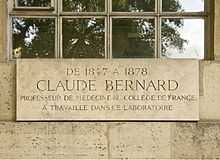
A commemorative plaque, or simply plaque, is a plate of metal, ceramic, stone, wood, or other material, typically attached to a wall, stone, or other vertical surface, and bearing text or an image in relief, or both, in memory of one or more persons, an event, a former use of the place, or some other thing. A monumental plaque or tablet commemorating a deceased person or persons, can be a simple form of church monument. Most modern plaques affixed in this way are commemorative of something, but this is not always the case, and there are purely religious plaques, or those signifying ownership or affiliation of some sort. A plaquette is a small plaque, but in English, unlike many European languages, the term is not typically used for outdoor plaques fixed to walls.
World War I
After the First World War, the families of British and British Empire (now Commonwealth) service men and women killed during the conflict were presented with bronze Memorial Plaques. The plaques, of about 125 millimetres (4.9 in) in diameter, were designed by the eminent sculptor and medallist, Edward Carter Preston.
United Kingdom
In England, the London blue plaques scheme, which is administered by English Heritage, has been running for over 140 years and is thought to be the oldest of its kind in the world. Plaques are attached to buildings to commemorate their association with important occupants or events.[1]
A range of other commemorative plaque schemes, which are typically run by local councils and charitable bodies, exists throughout the United Kingdom. These tend to use their own criteria for determining the eligibility to put up a plaque. A list of schemes currently operating in England is available on the English Heritage website.
United States
In the United States, various state governments have commemorative plaque schemes usually using the name historical markers. The National Trust for Historic Preservation or the U.S. Government, through the National Register of Historic Places, can bestow historical status.
State programmes, such as the California Register of Historical Resources allows designated sites to place their own markers.
Theft
As the price of scrap metal has increased plaques have been the target of metal thieves wishing to resell the metal for cash.[2]
Awards
Plaques or, more often, plaquettes, are also given as awards instead of trophies or ribbons. Such plaques usually bear text describing the reason for the award and, often, the date of the award.
Examples
-
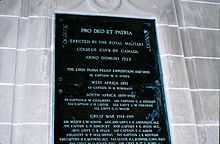
Plaque inside the Royal Military College of Canada
-
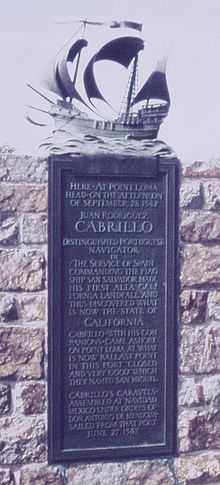
Plaque at Cabrillo National Monument, Point Loma, near San Diego, CA
-

The plaque in the Hong Kong Park commemorating the park's opening by the Governor of Hong Kong in 1991
-

An award plaque made of wood with a printed metal plate and a medallion
-

An example of a plaque in Canberra, Australia
-

Plaque showing the historical coat of arms of Wolverhampton, England, before 1898
-
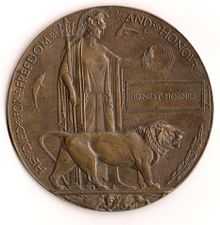
First World War memorial plaque
-
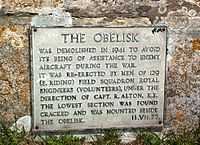
Second World War memorial plaque
-

Plaque for You Chung Hong, California lawyer, in Chinatown, Los Angeles, California, 2012
-

Plaque of Edward VII by Emil Fuchs at The King's Hall Herne Bay, Kent, England (1913).
See also
References
- ↑ "History of the Blue Plaques Scheme". Retrieved 30 July 2012.
- ↑ Hightower, Eve (13 December 2007). "Stanislaus supervisor wants recycling ordinance used to fight metal theft regionally". The Modesto Bee. Retrieved 17 November 2010.
External links
| Wikimedia Commons has media related to Plaques. |